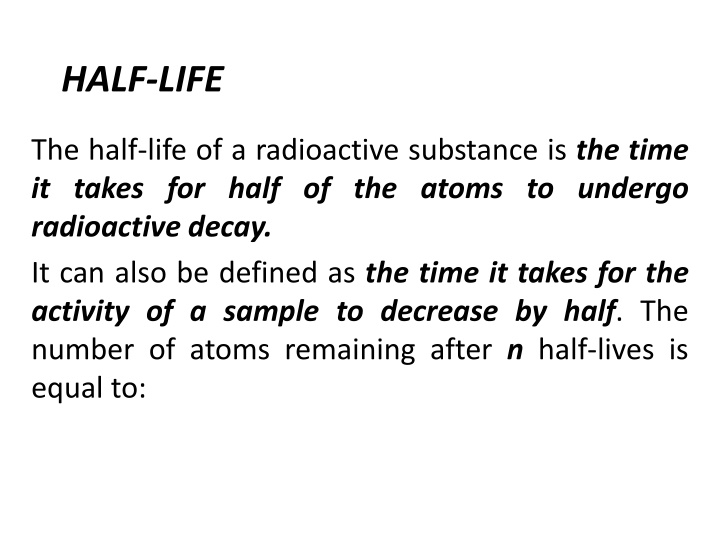
Radioactive Decay and Half-Life
Learn about radioactive decay, half-life, and the radioactive decay equation. Discover how the number of atoms remaining changes over multiple half-lives and understand the concept of decay constants.
Download Presentation

Please find below an Image/Link to download the presentation.
The content on the website is provided AS IS for your information and personal use only. It may not be sold, licensed, or shared on other websites without obtaining consent from the author. If you encounter any issues during the download, it is possible that the publisher has removed the file from their server.
You are allowed to download the files provided on this website for personal or commercial use, subject to the condition that they are used lawfully. All files are the property of their respective owners.
The content on the website is provided AS IS for your information and personal use only. It may not be sold, licensed, or shared on other websites without obtaining consent from the author.
E N D
Presentation Transcript
HALF-LIFE The half-life of a radioactive substance is the time it takes for half of the atoms to undergo radioactive decay. It can also be defined as the time it takes for the activity of a sample to decrease by half. The number of atoms remaining after n half-lives is equal to:
The number of atoms remaining after n half- lives is equal to:
Thus, for n = 1, 1/2 of the initial atoms remain; for n = 2, 1/4 remain; for n = 3, 1/8 remain, and so on.
THE RADIOACTIVE DECAY EQUATION A radioactive nuclide disintegrates or decays spontaneously at a rate depending on the number of original atoms present and upon its decay constant, lambda ( ). The constant is defined as the instantaneous fraction of atoms decaying per unit time. Each radioactive nuclide has its own characteristic decay constant.






















